Sunday 25 April 2010
Friday 23 April 2010
Thriller Evaluation - (Friday, 23/04/2010)
With the opening sequence being an essential part of the film, it needs to express certain forms and conventions that establish the genre and narrative.
My opening sequence conforms to the conventions of a ‘real’ media product by:
- Introducing the antagonist, who is clearly identifiable as he is dressed in dark clothing, with his hood up and carrying a black bag, making him look menacing, and the stereotype of what a ‘bad guy’ may be
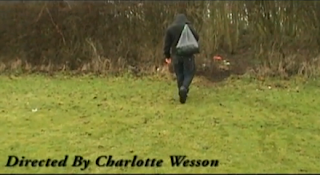
- Using opening credits
- Creating enigmas, for example the black plastic bag that the male character is carrying throughout the sequence. This is an enigma as the audience are not sure of the contents of the bag, and wish for this to be solved.
The enigma of the black bag is similar to the enigma tape in Lost Highway by David Lynch, in the same effect it creates by adding a sense of mystery and ambiguity.
- Drawing the audience in
- Using a soundtrack deliberately added to create an eerie atmosphere
These conventions are more commonly seen in thrillers, which is the genre I had chosen to work with.
My opening sequence challenges the conventions of a ‘real’ media product by:
- Filming in naturalistic lighting, and a lighter environment, which is not typical of a thriller
- Using handheld camera - such as in The Blair Witch Project, which also uses handheld camera, however they use it throughout the entire film, whereas I only used it for a short clip, which was added to create a sense of urgency and intensity.
- Using no dialogue
2. How does your media product represent particular social groups?
My film focuses on the younger generation, of teenagers around 13 – 18. I feel the opening does not have a specific social group to focus on; however I feel the film represents more middle-class citizens. I believe that my film represents young people in a stereotypical portrayal of being ‘thugs’ or potentially dangerous to people, which is implied by the dark clothing and black bag, suggesting the young male character is the antagonist. I also believe that my film represents the older generation stereotypically by using the ‘old woman’ character. She is portrayed as sitting down, whereas the young, male character is always walking, immediately making her seem inferior, and possibly vulnerable, which most old people are viewed as. Also, she is shrouded in a blanket, again making her seem vulnerable, however also mysterious. This image has been seen across a broad variety of films, but one genre that uses the old-lady characters most prominently is fairytales. Although these are not thrillers, or have any characteristics of thrillers, the older women are sometimes portrayed as haggard and evil.
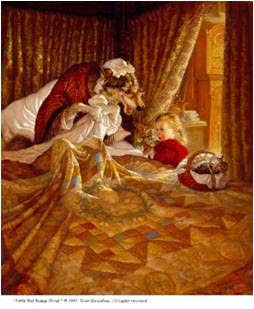
http://www.heavenandearthdesigns.com/images/scott_gustafson/Little_Red_Riding_Hood1.jpg
This is demonstrated in such fairytales such as Little Red Riding Hood by the Brothers Grimm and Snow White & The Seven Dwarves. Though aimed at children, some of the same elements of the mysterious, and possibly evil, old lady are in these fairytales.
I decided to use this element of the 'evil old hag' from fairytales in order to construct my piece, even though fairytales were not the specified genre. However, I do feel that the element of fairytale works well, as it is well known and easy to portray.
3. What kind of media institution might distribute your media product and why?
EM media is the type of institution that I would expect to aid the production of my film by providing sets, casts and funding, however they are not a distribution company. A distributor who may work in conjunction with our film may be Optimum, which works with the films EM media helps. I believe these would be a suitable distribution company as they distribute lower budget films, such as This Is England, which is not a thriller; however has a darker side, much like my film. I believe my film would fit into the ‘alternative’ category, as I believe it would receive a better reception from a ‘darker’ audience, who enjoy dark films, such as The Orphanage or Eden Lake.

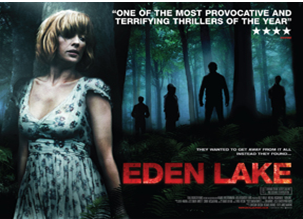
However, product could also be distributed online, like some unconventional distributors do. This could use social networking sites popular with a young audience, such as Myspace and Facebook, to distribute my film and therefore promote it, targeting the audience. This would be useful as it would be available to a wide audience, but also attract the specific audience.
Also, my product could be marketed online as an efficient method of marketing. This would be similar to the way Le Donk & Scor-zay-zee (Shane Meadows, 2009) was marketed online, as they released the first 10 minutes of their film online in order to encourage viewers to watch and take interest.
http://www.shanemeadows.co.uk/
(Le Donk & Scor-zay-zee trailer)
This is similar to Avatar (James Cameron, 2009) which was also promoted on the popular video sharing website, common with the 'younger' generation, Youtube, in order to encourage viewers.
4. Who would be the audience for your media product?
The initial targeted audience for our thriller was teenagers, both male and female, ranging from the age of around 16 - 36 (young audience), depending on what age certificate the ‘finished’ film would be. However, I feel my film may appeal to men more, as the thriller genre is often more associated with men, as it is often scary, therefore if you watch them you may be deemed ‘brave’, which is often associated with masculinity. Also, the main character in this film is male, and young, which represents males in a more positive light, therefore men may relate to them more. In contrast, the female character is perceived as old, therefore possibly representing women in a more negative light.
My film would appeal to both male and female adolescents with an unusual taste in films, who enjoy the thriller genre, as i feel it has a niche audience, who would enjoy alternative films, therefore targeting a specific group of people.
5. How did you attract/address your audience?
In order to obtain information about what our audience preferred in a thriller, we gave ten teenagers, aged between 14 and 17, a questionnaire asking them a variety of questions about their taste in thrillers.
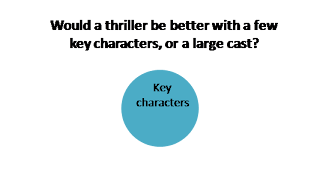
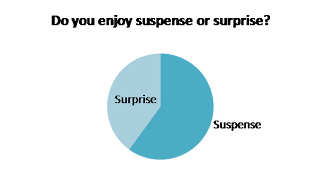
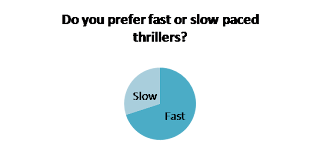
From this, I found a number of things, such as: they would only prefer a few key characters, for it to have suspense and for the thriller to be fast paced. Although I could work with most of these requests, unfortunately I could not meet the needs of all of these requests. However, I feel that dealing with the essential requests therefore attracted the audience sufficiently.
I kept to the targeted age bracket using a variety of techniques. One of these techniques being by using camera techniques more commonly used in modern thrillers, such as handheld camera, which is normally aimed at teenagers.
Also, the main character is clearly a teenager or young adult. This would also appeal to a teenage audience, more so than an older audience, because they would be able to relate with the main character and possibly understand his actions or intentions.
Also, I filmed in a suburban setting, which appeals to my audience, and also filmed what is perceived as middle class citizens and houses. This targets aspirational people, and also appeals to the target audiences ideal.
If i had a bigger budget, I would attract my audience by using posters to promote my film. This would appeal more to teenagers, particularly advertising on the internet, or on a TV station, such as E4, which is popular with younger people.
However, I could use viral marketing for advertising, which is virtually free, which would be useful for a low budget film such as mine.
6. What have you learnt about technologies from the process of constructing this product?
I have learnt that technologies can be unreliable and can disappoint on occasions. For instance, some of our capturing would not work on the computer, yet we did not make any mistakes. Therefore, an error had occurred that we could not fix as we did not know where we went wrong. Also, the sound quality on the camera was not very good when filming in windy conditions, therefore the filming sounded grainy and could not be used in the final product.
However, we overcame these problems by, for instance, re-shooting scenes which were not suitable for use, and working our way around problems such as a grainy ambient sound by muting the soundtrack and playing a piece of incidental music over the top of it.
If was set this task again, I would do a number of things differently for different reasons. Firstly, I would use a different camera, and if a bigger budget was available, I would use a more professional camera. This would give a better picture and sound quality, making the overall product better in my opinion. Also, I would use a better tripod and other equipment, such as lighting, as this would enhance the product; again giving a more clear and professional look overall. However, as my film looks low-budget, it can clearly be established as a film EM Media may help with funding for and Optimum may distribute.
7. Looking back at your preliminary task, what do you feel you have learnt in the progression from it to the full product?
I feel that I have learnt the true importance of varying different shots, and making sure that there is more than one take to each scene, as sometimes the shots do not look how you would expect them. Also, I have learnt how to edit more efficiently and professionally using Adobe Premier Pro CS4 compared to my preliminary task, and how to use effects and transitions to enhance the filming.
I have also learnt how to identify continuity errors, therefore making the filming look more professional and avoid losing marks for small errors.
For instance, in my preliminary task I broke the 180 degree rule:
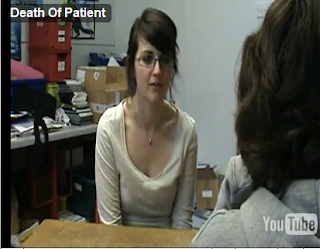
In this shot, it can clearly be seen that the filming is over the male character’s LEFT shoulder, looking at the female character.

However, in this shot, the male character is being filmed over the female character’s LEFT shoulder also, where as it should have been filmed over the RIGHT shoulder.
Although this is only a small continuity error that may be unrecognisable, it does not look as professional, and may lose marks in the actual filming.
Also, I have learnt how to identify what effects and transitions are appropriate to use for the genre of film i created. For instance, the ‘centre split’ transition would not be appropriate, as it does not look professional.

Overall, I have learnt how to successfully film and produce a short film using software that i had previously not worked with. I also learnt how to manage my time efficiently in order to get all editing, blogging and filming done in an achievable space of time.
I believe my skills have progressed in many ways, such as time management, group & communication skills and also editing skills.
Friday 16 April 2010
Thriller Re-Editing - (16/04/2010)
However, due to the draft evaluation being due in, we could not work on the editing for a great deal of time, and therefore had to concentrate on our evaluations.
Also, we noticed a continuity error where the hue of the picture alters slightly with a blue-ish tinge from having a more natural colouration, and also the male actor is wearing different coloured jeans. Although these errors were noticed prior to editing, we unfortunately could not change this.
Thriller Evaluation [Draft] - (Friday, 16/04/2010)
With the opening sequence being an essential part of the film, it needs to express certain forms and conventions that establish the genre and narrative.
My opening sequence conforms to the conventions of a ‘real’ media product by:
- Introducing the antagonist, who is clearly identifiable as he is dressed in dark clothing, with his hood up and carrying a black bag, making him look menacing, and the stereotype of what a ‘bad guy’ may be

- Using opening credits
- Creating enigmas, for example the black plastic bag that the male character is carrying throughout the sequence. This is an enigma as the audience are not sure of the contents of the bag, and wish for this to be solved.
- Drawing the audience in
- Using a soundtrack deliberately added to create an eerie atmosphere
These conventions are more commonly seen in thrillers, which is the genre i had chosen to work with.
My opening sequence challenges the conventions of a ‘real’ media product by:
- Filming in naturalistic lighting, and a lighter environment, which is not typical of a thriller
- Using handheld camera
- Using no dialogue
2. How does your media product represent particular social groups?
My film focuses on the younger generation, of teenagers around 13 – 18. I feel the opening does not have a specific social group to focus on; however i feel the film represents more middle-class citizens. I cast Shaun Cutts as the main antagonist as he was readily available and he
3. What kind of media institution might distribute your media product and why?
EM media is the type of institution that i would expect to aid the production of my film by providing sets, casts and funding, however they are not a distribution company. A distributer who may work in conjunction with our film may be Optimum, which works with the film EM media helps. I believe these would be a suitable distribution company as they distribute lower budget films, such as This Is England, which is not a thriller; however has a darker side, much like my film. This darker side is present in the form of the enigmas of the perceived old woman and the black bag.
4. Who would be the audience for your media product?
The initial targeted audience for our thriller was teenagers, both male and female, ranging from the age of around 15 to 18, depending on what age certificate the ‘finished’ film would be. However, i feel my film may appeal to men more, as the thriller genre is often more associated with men, as it is often scary, therefore if you watch them you may be deemed ‘brave’, which is often associated with masculinity. Also, the main character in this film is male, and young, which represents males in a more positive light, therefore men may relate to them more. In contrast, the female character is perceived as old, therefore possibly representing women in a more negative light.
My film would appeal to both male and female adolescents with an obscure taste in films, who enjoy the thriller genre, as i feel it has a niche audience, therefore targeting a specific group of people.
5. How did you attract/address your audience?
We kept to our targeted age bracket using a variety of techniques. One of these techniques being by using camera techniques more commonly used in modern thrillers, which are normally aged at teenagers. Also, the main character is clearly a teenager or young adult. This would also appeal to a teenage audience, more so than an older audience, because they would be able to relate with the main character, and possible understand his actions or intentions.
6. What have you learnt about technologies from the process of constructing this product?
I have learnt that technologies can be unreliable and can disappoint on occasions. For instance, some of our capturing would not work on the computer, yet we did not make any mistakes. Therefore, an error had occurred that we could not fix as we did not know where we went wrong. Also, the sound quality on the camera was not very good when filming in windy conditions, therefore the filming sounded grainy and could not be used in the final product.
7. Looking back at your preliminary task, what do you feel you have learnt in the progression from it to the full product?
I feel that I have learnt the true importance of varying different shots, and making sure that there is more than one take to each scene, as sometimes the shots do not look how you would expect them. Also, i have learnt how to edit more efficiently and professionally using Adobe Premier Pro CS4 compared to my preliminary task, and how to use effects and transitions to enhance the filming.
I have also learnt how to identify continuity errors, therefore making the filming look more professional and avoid losing marks for small errors.
For instance, in my preliminary task i broke the 180 degree rule:

In this shot, it can clearly be seen that the filming is over the male character’s LEFT shoulder, looking at the female character.
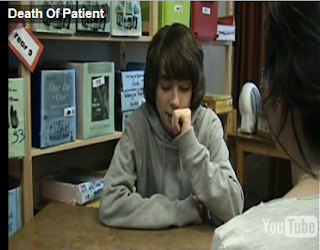
However, in this shot, the male character is being filmed over the female character’s LEFT shoulder also, where as it should have been filmed over the RIGHT shoulder.
Although this is only a small continuity error that may be unrecognisable, it does not look as professional, and may lose marks in the actual filming.
I have also learnt how to use effects, shots and transitions appropriate to the genre of the film. For example:
Thursday 15 April 2010
Thriller Refilming - Wednesday, (14/04/2010)
Alex filmed the pan shot up the driveway to the door, as the lost shot of this was slanted when we filmed it orginally. We then used handheld camera (which Alex filmed) to add a sense of mystery and ambiguity to our sequence, which was recommended by Mr. Mitchell.
Finally, I filmed a close up of Shaun's hand on the door handle, which then ended with a zoom in. This was to enable continuity from the handheld camera shot to the final shot, which is an over the shoulder shot of Shaun's character entering the room and throwing down the bag. This is different to the original ending, however we felt it was more suitable and was easy to achieve with the resources available.
The last thing left for us to do is to re edit the ending of our sequence, choose more appropriate music and make sure the entire sequence flows well.
Monday 12 April 2010
Thriller Evaluation - (Monday, 12/04/2010)
We were given a sheet and example answer to inspire us and to aid us in composing our evalutation.
Friday 26 March 2010
Thriller [Final Draft] Editing - (Friday, 26/03/2010)
We also added effects onto our title credit in order to make it appear more professional and authentic as a thriller.
However, there was not much else we could do without the reshoot material, therefore we must wait until after the 2 weeks holidays to truly change our sequence.
Monday 22 March 2010
Thriller Feedback (Monday, 22/03/2010)
We decided we needed to: cut down the length of walking in the sequence, as it is too long and boring; add snippets of flash backs/forwards to add the 'thrill' it lacked; adjust the music to make it fit the tone of the sequence, for instance by using a different sound track when they go into the house, and re-shoot the last two scenes, as they are too ambiguous and confusing.
We have decided this filming will take part Wednesday, 14/04/2010, and then we shall be able to edit in Friday, 16/04/2010 lesson, and also any free periods.
This should hopefully boost our grade, as well as make the piece look more polished.
Friday 19 March 2010
Thriller Rough Draft (Friday, 19/03/2010)
Postives:
I think we incorporated a large variety of angles and shots, which work well with the naturalistic style of the filming. I also think that the shots work well together with minimal editing, which flows naturally, as we wanted. Also, the use of silence at the end builds up tension, which I think is classic of the thriller genre and adds suspense.
Negative:
I don't believe that the soundtrack works quite as well with the piece as it should, and I feel it has too much of a 'techno' feel to be in a thriller piece. Also, I think the last two shots of the sequence have too many continuity errors and do not flow well with the piece, making it feel 'disjointed'. In addition, I do not believe the titles are 'interesting' enough and do not incorporate the eeriness of the film.
Monday 15 March 2010
Thriller Editing - (Monday, 15/03/2010)
Next lesson, (Friday, 19/03/2010) is when our film has to be exported to AVI in order for it to be assessed and for feedback on it. I believe we will have to reshoot the last two scenes, as they were rushed and include some continuity errors, which are easily fixable with a reshoot.
Friday 12 March 2010
Thriller Editing - (Friday, 12/03/2010)
We then imported it into Adobe Premier Pro CS4 and edited the music clip to the right point, before matching it up with the visuals. We then slowed down the clip from 100% to 70% in order to make it fit the mood of the sequence better, and made sure we ended the music clip at an appropriate point to build up suspense.
One problem we had was adjusting the volume, however this could be adjusted when on Youtube and when watching the clip.
Wednesday 10 March 2010
Thriller Editing - (Wednesday, 10/03/2010)
http://derekaudette.ottwaarts.com. I will present these songs to the rest of my group on Friday so that we can all choose appropriate incidental music to be the soundtrack to the entire clip.
Monday 8 March 2010
Thriller Editing - (Monday, 08/03/2010)
We also added in some editing transitions in order to choose the most appropriate for our sequence, and settled on two for the last two clips, as we thought the rest of the sequence looked naturalistic and flowing, therefore did not need effects or transitions.
Finally, we worked on the soundtrack to the sequence, including muting the ambient sound, as we found it was too 'fuzzed' and did not flow well. We attempted to find some copyright free music, however most of the sites were blocked, or did not include appropriate music, so I am going to try and find a few to present to the group by the next lesson (Friday, 12/03/2010).
Friday 5 March 2010
Thriller Editing - (Friday, 05/03/2010)
We picked the most appropriate and our favourite scenes and put them into our project, editing where appropriate, and watching the sequence altogether. We noticed some needs for re-shooting, such as inside the house where the lighting is too yellow, and some continuity errors. However, now we have finished editing almost, we have more time to re-shoot if necessary.
Finally, we need to add in transitions and a soundtrack, however we shall complete this next lesson when there is more time to find appropriate free music.
Wednesday 3 March 2010
Thriller Filming (Wednesday, 03/03/2010)
We then shot the scenes up the driveway and inside Alex's house. These proved a problem as the light we took out was too bright and made the shots have a yellow-ish tinge. However, we tried to dim the light as best as we possibly could.
Finally, we transported the equipment to Natasha's house, where we filmed the 'rocking chair' scene on handheld camera and static camera. There were some safety issues with the light in this scene, and also the light was too bright again, therefore we had to test a range of methods to dim it.
Monday 1 March 2010
Thriller Editing - (Monday, 01/03/2010)
We picked out the two best clips and added them to our project, cropping them at appropriate timings. We did this until the sequence flowed together well and we could move on to adding titles.
Adding titles was quite difficult to begin with, however we chose a suitable font style and size and added it to our clips. However, we noticed we need to add transitioning to the titles in order to make them flow. This will be done at the end of our editing process.
Finally, we polled some people by an opportunity sample to find out the best title for our thriller. After eliminating '(The) Client' (which was the most popular choice, however we were advised not to use it) and 'Negotiations', we eventually settled on '(The) Participant' and discussed where it would be placed in the sequence.
Friday 26 February 2010
Thriller Task Filming - (Friday, 26/02/2010)
I believe the filming went well as we managed to get five or six takes of the pan shot in order to ensure we had a good take, as well as at least four takes of the establishing shot. We also recorded non-diegetic sound of twigs snapping so that we could add this to the pan shot.
Some problems we encountered whilst filming included the weather conditions, which included cold, rain and wind, which was, although useful for our filming environment, did not actually help the filming situation, and made it incredibly difficult to film whilst the camera was wet and we were cold.
Finally, we captured our footage to our T drive (media4), and learned how to separate clips so that it would be easier to edit together.
We will continue filming next Wednesday (03/03/2010) after school, and will be filming the indoor shots and the scenes with the house.
Monday 22 February 2010
Thriller Planning - Genre Research (Monday, 22/02/2010)
Thriller is a broad genre that includes numerous and often overlapping sub-genres. Thrillers are characterized by fast pacing, frequent action, and resourceful heroes who must thwart the plans of more powerful and better equipped villains.
Characteristics:
Thrillers often take place in exotic settings such as foreign cities or deserts. The heroes in most thrillers are frequently "hard men" accustomed to danger: law enforcement officers, spies, soldiers, seamen or aviators. However, they may also be ordinary citizens drawn into danger by accident. While such heroes have traditionally been men, women lead characters have become increasingly common.
Components:
In recent years, when thrillers have been increasingly influenced by horror or psychological-horror exposure in pop culture, an ominous or monstrous element has become common to heighten tension. The monster could be anything, even an inferior physical force made superior only by their intellect, a supernatural entity, aliens, serial killers, or even microbes or chemical agents.
Genres:
Action (e.g. James Bond), Conspiracy (e.g. Capricorn One), Crime (e.g. Se7en), Disaster (e.g. Earthquake), Drama (e.g. The Illusionist), Erotic (e.g. Fatal Attraction), Psychological (e.g. Strangers on a Train), Spy (e.g. Bourne Triology) or Religious (e.g. Da Vinci Code)
(All information obtained from: http://en.wikipedia.org/wiki/Thriller_(genre), therefore information may not be reliable)
Thriller Planning - Risk Assessment (Monday, 22/02/2010)
Red-High risk
Orange- Medium risk
Green- Low risk
To reduce the risk of injury, all people involved should be careful when walking, especially when walking with heavy equipment and around areas with uneven ground and fallen debris.
Drowning
Cast members and crew should take extra precaution when filming next to the river to avoid situations such as falling in.
Damage to equipment
All participants must take extra care when handling filming equipment so that no damage takes place.
Illness
If a member of the cast or crew falls ill and is unable to attend an arranged date, a replacement should be considered or a new date should be proposed.
Weather conditions
If the weather is unsuitable at the proposed date of filming, indoor scenes should be filmed instead and conditions should be coped with as best as possible. Crew should make sure no filming equipment is damaged due to weather.
Assault
If any scenes should be filmed at night, crew and cast must take safety measures in order to stay as safe as possible when filming outside to reduce the risk of an unwanted event taking place.
Thriller Planning - Props (Monday, 22/02/2010)
The rest of our shots will mainly use locations, rather than props, to add atmosphere to our thriller.

Bag
 Shaun's costume: Front
Shaun's costume: Front
Thriller Planning - Characters (Monday, 22/02/2010)
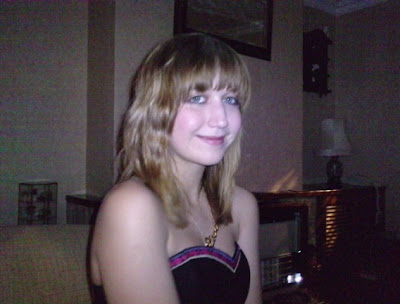 Natasha Hoskins:
Natasha Hoskins:We chose Natasha as she is available at the time of filming, and also a responsible and trustworthy person, who we are confident will be able to attend all our arranged sessions. She will be playing the 'mysterious woman' character in the rocking chair, however only her hands and eye will be visible.
 Shaun Cutts:
Shaun Cutts:Shaun is also an available character, as well as being part of the filming group, so already knows the plotline and how we intend to film our scenes. He is also taking AS Level drama, which makes him a prime candidate for the role. We are also confident he will be able to attend all sessions, making him reliable. He will be playing the role of the male character who appears primarily in the forest scenes.
Thriller Planning - Questionnaire Results & Analysis (Monday, 22/02/2010)

The most popular pace of thrillers was fast, as most people would prefer lots of action to be happening quickly in order to create suspense and mystery.
However, I personally would prefer a slower paced thriller, so the story line is better played out.

The most popular choice was a minimal amount of dialogue, which is most likely because this will build suspense and is conventional as a thriller.
This result will be taken into account, as this was the desired result when compiling the questionnaire.

Suspense was a popular choice, as this is a traditional characteristic of a thriller, however is often followed by surprise.
We will take this result into account, and have planned a mostly suspense-based thriller.

100% of the people polled said that they would like only a few key characters as opposed to a large cast, in order to keep the focus on the storyline and the main characters.

Five people said they would prefer the filming to be done in the day time, and also five people said they would prefer the filming to be done at night time.

The vast majority of those polled said they would prefer an action-based thriller, which would also fit with the popular choices of a fast paced film.

A small minority wanted the film to be shot ‘abstractly’ (non-conventionally), but the larger proportion of the sample wanted it to be shot realistically, as if you were there.

Over 3/4 of those asked said that they would prefer a soundtrack, including music and dialogue.

Two-thirds of the sample asked wanted a climatic soundtrack, in order to build tension, as opposed to a subtle soundtrack that only slightly enhances the viewing.

Everyone asked preferred to have opening credits, which would give a more ‘authentic’ and ‘traditional’ feel to the film.

The majority of those asked chose ‘slowly’. I presume this is to make the titles easier to read, and to also build suspense, which would inevitably lead to a climax.
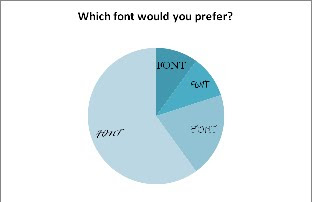
The Rage Italic font was most popular among those who were asked, however, in retrospect, this font seems too difficult to read for opening titles, and should probably be reconsidered.
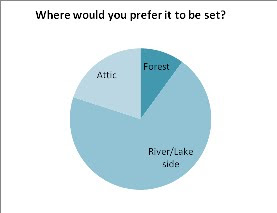
‘River/Lake side’ was a popular choice among those who took part in the questionnaire. However, this may be a difficult location to shoot due to the time limit and certain restraints within the group, so we may need to adapt from this.
Friday 12 February 2010
Thriller Planning (Friday, 12/02/2010)

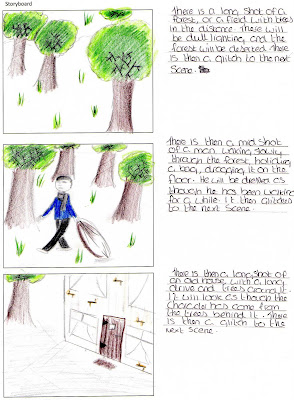
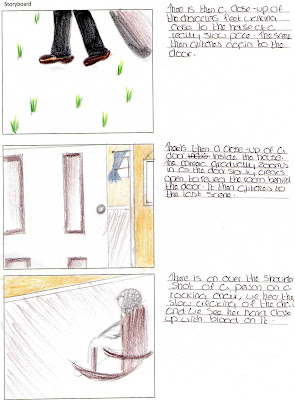
Alex worked on the final storyboard and annotated it in order to complete that stage of our research and planning. Miss Dughan gave her opinions on the filming and what errors may be made, such as the lighting in the indoor sequences we planned, as the white balance may be off if the room is not well lit. Shaun and I also worked on the risk assessment, assessing risks such as injury and damage to equipment.
We intend to carry on our research and planning (including finding a cast, locations and costumes) during the February half term, and should have it completed, or very nearly completed, by the return to college. This will enable us to be on track for filming.
Thriller analysis - (Friday, 12/02/2010)
(00:00 - 03:00)
Camera:
In the opening credits, there is a long shot of James walking across who proceeds to shoot a gun at the camera. This immediately creates the effect that the film is going to have lots of action and fighting scenes in. Afterwards, there are lots of long shots in order to establish the setting, showing surfers and then, what I presume to be, German army officers.
There is a close up of James, establishing him as the main character and the one the audience should focus on the most. All the shots are in quick succession, setting the fast and action pace for the film.
Sound:
There is the familiar James Bond theme at the start of the opening credits, which immediately engages the audience as you expect it to live up, if not succeed, the expectations of the previous films. There is a gun shot when James fires towards the camera, again establishing there will be lots of action in the film. Finally, there is the ambient sound of the sea to begin with, letting the audience know it is not set in England, but in a foreign place abroad, which is a typical characteristic of thrillers. The sound creates tension, as the incidental music of the soundtrack is constantly played throughout the 3 minute clip, leading the audience to expect a climatic ending.
Editing:
The graphics at the beginning show circles following horizontally across the screen and then track James, as if looking down the barrel of a gun. This again establishes the film as having lots of action and gun-fights in. Apart from this, the only editing used is basic straight cuts, which are quick to set the tempo of the film.
Mise En Scene:
The colours used at the beginning include mainly black, red and white. Black and white give a authentic and 'business like' feel, whereas red is usually associated with blood, which would fit in with the film genre. James is also dressed smartly, making him appear trustworthy and suave, as the audience would expect a secret agent to look. Furthermore, the army costume of the guards and war setting establishes that a dramatic, fighting scene will take place shortly. Props also include: a briefcase, gun and special agent equipment. These are all familiarly associated with secret agents, conforming to the audiences stereotypical views of a action-thriller film. Lastly, James gets the most screen time, establishing that he is the main character and earns the most focus.
Donnie Darko
(00:00 - 03:00)
Camera:
The sequence begins with a pan shot of a scene off of what appears to be a mountain, surveying the landscape which is mainly made up of trees. This pan continues to a road, where there is a man lying in the middle of it. This immediately makes the audience ask questions about the scene, which thrillers are intended to do. The slow zoom builds tension, as the audience do not know whether he is alive at this point. There is a pan-mid shot around his face so we are enabled to see his expression, which looks perplexed but not in pain. There is then a close up, but it is dark, making the situation seem ambiguous and not enabling the audience to fully understand who the character is. This moves to a mid-shot of a boy cycling, which is followed by a close up of a Halloween carnival sign. This again makes the audience ask questions, as this could be foreshadowing future events.
Sound:
There is an ambiguous sound that is playing over the titles, but it then becomes apparent that it is the sound of thunder. This builds tension as the audience do not know what is happening, as the screen is completely black, which gives them an open mind for what scene may proceed it. The music then becomes more tense and instrumental, coordinating with the camera shots, leaving the audience asking questions about the scene. An ambient sound of birds fits with the scene of a landscape, however is unusually eerie as it seems to not fit the intensity of the scene. The music then becomes instrumental and upbeat, ridding the audience of any tension they had before, yet still asking questions.
Editing:
At the beginning of the clip, the titles appear small and white on a black background, and in an unusual font, which fits the thriller genre. There are few titles, and accompanied by the sound of thunder, which makes the audience ask questions about the situation. After the pan shot, the title of the film appears over the horizon, which then fades to white. The male character also receives the most screen time, establishing that he is the main character in the film.
Mise En Scene:
The lighting at the beginning is naturalistic, however incredibly dark. This makes the audience believe that it is set either in the early morning, or dusk. (As the birds are tweeting, it becomes apparent that this sequence is shot at dawn.) However, after the title appears, the lighting becomes naturalistic, however incredibly bright, which makes it unclear as to where the film is going.
Monday 8 February 2010
Starting Thrillers - Planning (Monday, 08/02/2010)
Mind Maps:


Storyboarding (rough draft):



As well as this planning, we also discussed some problems we may encounter, such as leaning too much towards the 'horror' genre, and being too fast paced. One worry I had was that it would look too much like a trailer, or too unrealistic if there was too much blood, as in a horror film. We agreed to re-discuss some of our options in order to make our film the best we can.
Friday 5 February 2010
Friday, 05/02/2010 - Introduction to Thrillers
Next lesson (Monday, 08/02/2010) we are going to be choosing our groups so that we an begin planning our thrillers.
Monday 1 February 2010
Monday, 01/02/2010 - Introduction to thrillers
Typical conventions included: dark settings, use of silence, dramatic music, mysterious casting and the use of black and red in mise en scene. The majority of the class, when asked, said that Lost Highway was their favourite out of the three clips as it had more traditional conventions of a thriller, including the use of darkness and silence, as well as ambiguous characters.
We then began to watch The Usual Suspects in order to develop an interest in thrillers to aid us with our coursework.
I found this lesson helpful in distinguishing between a trailer and opening sequence, as I learnt some new conventions. It was also helpful to see other people's work in order to see what is expected of me when producing this piece of coursework.
Friday 29 January 2010
Friday, 29/01/2010 - Preliminary Task Uploading
This is the final cut of th sequence for our preliminary task.
Positives:
I believe that we demonstrated a range of techniques well considering it was our first attempt. We aimed to add in a variety of shots, effects and sound. We used copyright free music, which was a good practice for the real coursework task. I believe we also worked and planned efficiently as a group, using our time wisely and also consulting resources and being resilient when needed. Also, I believe we attempted editing rather well considering it was our first time using the program with no previous knowledge, yet I still feel this could be improved a considerable amount.
Negatives:
We did not handle problems with the best manner and also did not think our plans through thoroughly enough whilst filming, leading to us breaking the 180 degree rule. We also took a considerable amount of time to film the takes, leading us to potentially falling behind the rest of the class. Our setting was also not sufficient as we had a large amount of background noise that disturbed our filming, and also leading to a 'fuzzy' sound on the camera. I believe we could've also used lighting in a better manner, as well as mise en scene and props.
Overall:
I believe the group had the correct approach to team work and ideas for the filming, however once the filming began we did not plan thoroughly enough. Also, I believe we could've read instructions and guidelines more clearly in order to work faster and more efficiently, thus getting the filming and editing done faster, but to the same, if not a higher, quality.
Friday, 29/01/2010 - Preliminary Task Uploading
Firstly, we needed to render the effects before exporting by pressing enter. This was simple to do as we only had a few effects, however once we begin filming the real coursework task, rendering will take much longer as more effects will be used.
Secondly, we exported the sequence to AVI, as this is what format it will be when it is burnt onto the DVD for the examiner, and was exported in widescreen as we filmed in widescreen. Afterwards, we had to export by 'starting queue', which took only a few seconds, but again will take longer in the 'real thing'.
Furthermore, it had to be uploaded via a Youtube account as there were problems with Blogger being too slow with uploading, therefore a different approach had to be taken. For this, we created a new account under the name of 'MegaAndrew2012', and then we began to upload the video. It however became apparent that this would take a considerable amount of time to achieve.
Friday, 29/01/2010 - Preliminary Task Editing
Unfortunately, we captured all our film at once and not in separate blocks, thus making it harder to edit successfully. We used the 'set in' and 'set out' points in order to crop the film into appropriate sections, however we found this was frustrating and time consuming as we had to time it perfectly in order to obtain the clips we wanted. This occasionally did not go to plan, and we had to start our work again numerous times before we could actually continue to edit properly.
However, after a while we began to understand how to edit our clips together, and to even add transitions such as fade to black and adding titles to the finished product. We also obtained some music from a copyright free source to play over the top of the climax of the sequence. This was obtained from http://derekaudette.ottwaarts.com and we chose 'The Long Road Into The Night'. We thought this fitted appropriately with the piece.
We did however establish some problems once we began to watch our filming back, and discovered we broke the 180 degree rule. In order for this to not become a problem again, we need to think more carefully about positioning whilst filming. Also, there was a considerable amount of background noise that interfered with the dialogue, including white noise buzzing and the sound of the classes in the English block where we filmed. For this problem to be resolved in the future, the location needs to be chosen wisely and any factors which may interfere have to be taken into account.
Monday 25 January 2010
Monday, 25/01/2010 - Preliminary Task Filming
Afterwards, we began to edit our sequence together, after watching a demonstration at the start of the lesson on how to work Adobe Premier Pro CS4. This demo included tips on what not to do in order to make sure our work would save correctly. Once we'd transferred our material onto the computer from a tape, we tried editing, however encountered some difficulties. One of these was that we didn't split our sequence into separate clips, making it incredibly difficult to edit together. From this experience, I have realised that it is ideal, and almost essential, to split sequences up, other wise it makes it harder to edit.
Next lesson, (Friday, 29/01/2010) we aim to have edited our piece, and recorded any necessary diegetic sound to complement it.
Saturday 23 January 2010
Friday 22 January 2010
Friday, 22/01/2010 - Preliminary Task Filming
During the second hour, where the entire group was present, we were forced to find a different location that was suitable for the task. I felt this hindered us as we had strict time limitations and finding and arranging the room and props (mise en scene) took too long. However, we did begin shooting the first few scenes including a pan shot, POV/long shot, over the shoulder shot and establishing two shot. This helped the group in understanding composition and camera shots and angles more.
Unfortunately, we were not able to shoot the entire sequence, and fear we may have to re shoot the entire thing to avoid continuity errors. However, this should take an hour or less and could be filmed in a free period. Although, this means we would lose time on the editing practice, and this could be counter-productive. We aim to resolve this problem by the next lesson (Monday, 25/01/2010).
I feel that I have learned a number of things about filming: that it takes a large amount of time to film one scene, particularly if you have to re shoot; group communication is essential in making the filming quicker and more efficient; casting is incredibly important if you want your shooting to work well and more planning is definitely needed if you have the knowledge that there may be a problem, such as an absense.
I hope that what I have learned from this preliminary task planning and filming can be used to avoid such errors in the main task.
Thursday 21 January 2010
Thursday, 21/01/2010 - Preliminary Task Planning
We also discussed possible camera angles and movements to end the preliminary task with in order to achieve the best possible effect and practice different techniques to use during the main task filming.
Tomorrow (Friday, 22/01/2010), we aim to complete the filming of the entire task within the 2 hour double period:
First hour: find a definite location, arrange a set, prepare a script, make sure the video camera battery is charged and also adjust the settings on the camera. We should also film the shots in which Andrew is not present (as during this hour he is in an exam).
Second hour: shoot all necessary remaining scenes, including a variety of camera angles and movement. Also, record ambient sounds in order to use during the editing stage.
Monday 18 January 2010
Monday, 18/01/2010 - Preliminary Task Planning
We then storyboarded our idea from our mind maps, including appropriate camera angles & movements, sound & dialogue and timings. This was incorporated with appropriate annotations of the shots to ensure clear understanding. We also discussed continuity errors that may occur, possible appropriate locations and problems that we may encounter during the filming due to absences.
Next lesson (Friday, 22/01/2010), we aim to have all the filming completed by period 5, including all shots filmed from different angles and the recording of ambient sounds to play over some of the shots. This may pose a difficulty as one of the group members are away during period 4, however we intend to deal with this problem as best as possible.
Friday, 15/01/2010 - Preliminary Task Planning
This mind map included possible misé en scene, camera angles & movement, sound (including dialogue) and locations.
Next lesson (Monday, 18/01/2010), we aim to have storyboarded our ideas, complete with definite locations, dialogue and camera angles & movement, and be ready to film by the following lesson.
(Side note: This post was posted after the initial lesson due to technical issues)









.jpg)